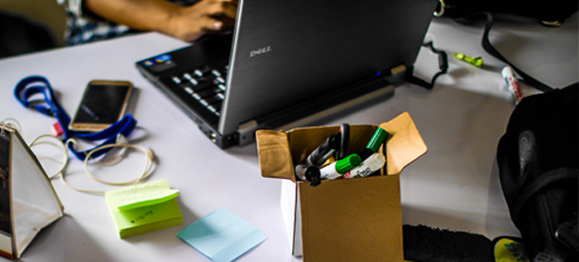
Do you ever begin a new week with a pile on your desk? Scraps of notations from Sunday. Left over to dos from last week. Started projects. Unanswered emails. And on top of all of that, the needs and responsibilities of the coming week.
Sometimes it’s challenging to know where to begin.
Sometimes all you can see is a mess.
I’m always captured by the clarity and purpose of Jesus’ statement, “I must work the works of him that sent me, while it is day: the night cometh, when no man can work” (John 9:4). Any committed Christian wants his or her life to be invested in doing the will of God. But on any given day, we struggle to know exactly what “the works of Him that sent me” are for that day.
Ultimately, we gain this clarity the same way Jesus did—by spending time with the Father.
But from there, how do we handle all the loose ends and demanding items calling for our attention? How do we deal with what just feels like an undefined mess in front of us? I’ve found that the best way through is to start with a plan. Here is the plan that helps me:
1. Capture. Gather all the pieces—handwritten lists, assignments, text messages, Post It notes, emails, etc.—into one place. It’s hard to tackle unidentified outcomes. Gathering them together can feel overwhelming, but it is also freeing once you get your mind around what you actually have.
2. Clarify. You may not be able to do everything you captured. But you need a way to decide what is important and what is just noise. The best way I know to clarify is to divide by my roles. I list out the following roles and filter my captured list through them.
- Husband
- Father/Grandfather
- Pastor/Teacher
- College President
- Counselor
- Friend
This is also where you determine what is merely urgent and what is actually important. Sometimes the most important projects aren’t urgent in the sense that others aren’t pressing us to finish them, but they are important in that they are part of our core God-given responsibilities.
3. Prioritize. What needs to be done first? Prioritizing tasks by A, B, and C gives perspective for progress. Sometimes C-level tasks are easier or can be completed more quickly, but if we spend our day doing them, we often don’t have greater progress toward fulfilling our real responsibilities at the end of the day than we did at the beginning.
4. Engage. We can make lists and plan all day long, but if we don’t put action somewhere, we won’t make progress. One of the deceptions of feeling overwhelmed is that it seems everything must either be done at once or not at all. Taking a step of action toward a real priority, can help break that sense of helplessness. Make it your goal to do something each day toward each level A priority.
5. Reflect. Set aside time each week (or for more pressing seasons, each day) to evaluate. Look at what has been done, what should be deleted from your list, and what you should delegate to someone else. I try to re-write my to-do list at least weekly as part of this process. It helps me keep from developing a snowballing list that is increasingly out of my control and forces me to make clarifying decisions by my roles.
Of course, this is an ongoing process. It requires tenacity and diligence to stay focused on your God-given roles and to do the priority item in each. But taking the time to capture and clarify helps make this a process of progress rather than simply a cycle of defeating actions.



